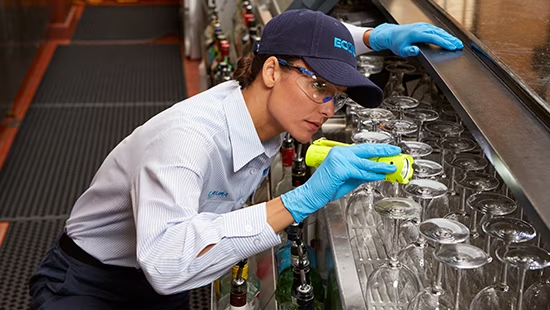Insects can become a significant nuisance in homes, businesses, and gardens, often leading to damage, health risks, and general discomfort. Effective insect control involves a range of methods tailored to address specific types of insects and their behaviors. Here are some key insect control methods to consider.
1. Preventive Measures
Sanitation: Good hygiene is shashel.eu for preventing insect infestations. Keep areas clean and free of food debris, which attracts insects. Regularly clean surfaces, dispose of garbage properly, and store food in airtight containers.
Exclusion: Seal entry points such as cracks and gaps in doors, windows, and walls to prevent insects from entering your space. Installing screens on windows and doors can also help keep flying insects out.
Proper Maintenance: Regularly inspect and maintain your property. Fix leaks, reduce moisture, and ensure proper ventilation to make your environment less attractive to insects like cockroaches and termites.
2. Mechanical Control
Traps: Insect traps are effective for monitoring and controlling insect populations. Sticky traps and pheromone traps can attract and capture specific insects, helping to reduce their numbers. Place traps in areas where insects are commonly seen.
Physical Barriers: Use physical barriers such as nets or mesh to protect plants from pests. Floating row covers can prevent insects like aphids and beetles from reaching garden crops.
3. Chemical Control
Insecticides: Chemical insecticides come in various forms, including sprays, powders, and baits. Choose insecticides based on the type of insect you are targeting and follow the manufacturer’s instructions for safe and effective application. Always consider the potential impact on humans, pets, and the environment.
Insect Growth Regulators (IGRs): IGRs are chemicals that interfere with the development of insects, preventing them from maturing or reproducing. They can be useful in managing populations of pests like fleas and cockroaches.
4. Biological Control
Natural Predators: Introduce natural predators or parasites to control insect populations. For example, ladybugs can help manage aphid infestations, while nematodes can target soil-dwelling insect larvae. This method can be especially effective in garden and agricultural settings.
Beneficial Microbes: Certain microorganisms, such as bacteria and fungi, can target and kill specific insect pests. For instance, Bacillus thuringiensis (Bt) is a bacterium used to control caterpillars and other insect larvae.
5. Professional Pest Control
For persistent or severe insect problems, consider hiring a professional pest control service. Experts can provide a comprehensive assessment and employ advanced techniques to manage and eliminate insect infestations effectively.
Conclusion
Effective insect control involves a combination of preventive measures, mechanical methods, chemical treatments, and biological controls. By understanding and applying these strategies, you can manage insect pests efficiently and maintain a comfortable and healthy environment.
